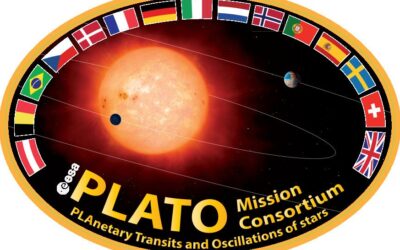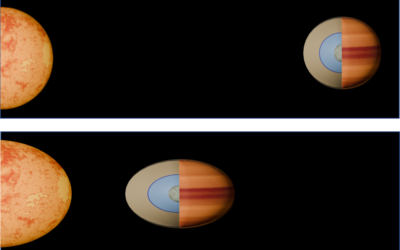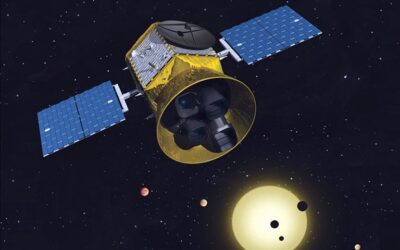Exploring the
Diversity of
Extrasolar Planets
What’s the latest news?
New worlds around distant stars
Over 6000 extrasolar planets have already been discovered and the number is growing! But how do we manage to track down these fascinating objects over such immense distances? What have we discovered so far? Are exoplanets so different from our own?
Let’s take a look at our solar system: What is a planet?
A planet is a celestial body that orbits a star and is illuminated by it. It does not produce any light itself, but only reflects light from the star.
There are eight planets in our solar system: Mercury, Venus, Earth, Mars, Jupiter, Saturn, Uranus and Neptune. They consist mainly of rock or gas. Some are orbited by moons.

Our solar system with its eight planets. Credit: IAU / Martin Kornmesser
They are fascinating objects in the universe that help us to learn more about the formation and development of the solar system.
Now let’s take a look outside: What is an extrasolar planet?
An exoplanet is a planet that is located outside our solar system and orbits a star other than the sun.
How do such planets form and develop?
This is what exoplanet research is trying to answer.

Artist’s impression of exoplanet diversity. Credit: SPP 1992 / N. Barmann
They exhibit a variety of properties that we are not familiar with from our solar system, be it their size, orbital period and orbit or temperatures that melt any rock. A few examples:
GJ 367 - a planet that orbits the star in just eight hours.
With half the mass of the Earth, the newly discovered planet is one of the lightest of the almost 5,000 exoplanets known today. With an impressive orbital speed of less than 8 hours, GJ 367 b belongs to the class of ‘fast travellers’.
With a diameter of just over 9,000 kilometres, GJ 367 b is slightly larger than Mars. From the determination of its radius and mass, it can be categorised as a rocky planet.

GJ 367 b SPP 1992 / Patricia Klein
The distance of just under 31 light years from Earth is ideal for further investigations. Above all, to study how rocky planets like Earth form and evolve.
The new exoplanet’s host star, a red dwarf called GJ 367, is only about half the size of the sun. This was favourable for the discovery, as the transit signal of the orbiting planet was particularly strong.
The results were published in the journal ‘Science’ on 2 December 2021.
Here you can find an article by DLR.
Kepler-90 - a shrunken planetary system.
Eight planets orbit around the star Kepler-90. Similar to our solar system, there are small planets inside and larger ones outside. However, the entire system would not extend beyond the Earth’s orbit.

Kepler-90-System / NASA
Trappist-1 - seven rocky planets around a dwarf star
Seven rocky planets orbit the dwarf star Trappist-1, three of them move in the star’s life-friendly zone.

TRAPPIST-1 System / The Planetary Society
Exoplanets have greatly expanded our understanding of the universe and revealed the possibility of other habitable planets beyond our solar system. It is an exciting and rapidly evolving field with new discoveries and insights being made all the time!
Explore the diversity of extrasolar planets.
You can find a vast collection of articles about exoplanet research. We also offer a booklist for further reading, as well as various media and teaching materials.
You want to become active yourself? Take a look at our hands-on section.
If there are questions left unanswered, you can pose them in our ask-an-astronomer section and receive detailed responses.
A small selection of interesting topics can be found here:
HD 110067: Six planets in harmony
The star HD 110067 is orbited by six planets whose periods are all in whole-number resonance.
...VLT – ESO’s Very Large Telescope
How does Europe’s giant telescope facility in Chile operate?
...Observatoire de Haute-Provence
Where was the first exoplanet around a sun-like star found?
...The European Southern Observatory (ESO)
Is an outstanding intergovernmental science and technology organisation in the field of astronomy.
...James Webb Space Telescope
How can this new mission contribute to the diversity of exoplanets?
...The beginnings of exoplanet exploration
What hurdles had to be overcome on the the path to the discovery of the first extrasolar planets?
...The Waltz telescope
How can this 100-year-old telescope perform cutting-edge astronomical research?
...Vera C. Rubin Observatory
How will this telescope revolutionise the field of astronomy and our knowledge of the universe?
...



























